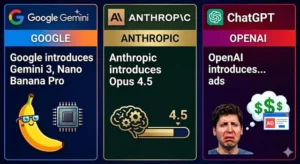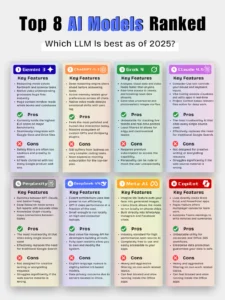
What is the best AI chatbot for every situation? The answer depends on your needs. People turn to ai chatbots for many reasons—quick answers, solving problems, or automating tasks. In 2022, 88% of customers used ai chatbots, and 87.2% reported positive or neutral experiences. The table below shows how people use chatbots across different areas:
|
الفئة |
Statistic / Metric |
1TP15التالي |
|---|---|---|
|
General Usage |
Customers who used AI chatbots in 2022 |
88% |
|
User Experience |
Consumers with neutral or positive experiences |
87.2% |
|
Customer Support |
Chatbots answering routine queries |
Up to 79% |
|
Business |
AI chatbot usage in IT departments |
53% |
|
Healthcare |
Healthcare organizations incorporating AI |
68% |

-
Chatbots help in sales, marketing, healthcare, and education.
-
They answer questions, give instant responses, and let people focus on bigger tasks.
-
Some ai chatbots work best for specific needs, like content creation or customer support.
A comprehensive comparison of ai chatbots should look at intelligence, features, integrations, pricing, user experience, platform compatibility, and voice chat. Matching these criteria to your needs helps you find the right ai chatbot.
Key Takeaways
-
AI chatbots serve many roles like customer support, business automation, coding help, research, and creative work, making tasks faster and easier.
-
Choosing the right chatbot means matching features like intelligence, integrations, cost, and user experience to your specific needs.
-
There are different chatbot types: rule-based for simple tasks, AI-powered for complex questions, generative for original answers, and hybrid for better performance.
-
Top chatbots like ChatGPT, Gemini, and Claude excel in different areas such as general use, advanced reasoning, and detailed summaries.
-
Free chatbots help you start, but paid plans often offer better features and value for growing needs and businesses.
AI Chatbots Comparison Overview
Evaluation Criteria
Choosing the right ai chatbots starts with understanding what makes them effective. Experts use several criteria to compare chatbots. These include intelligence, features, integrations, pricing, user experience, platform compatibility, and voice chat. Each factor plays a role in how well a chatbot meets user needs.
|
Weight |
الوصف |
|
|---|---|---|
|
General Features |
40% |
Evaluates core functionalities, comprehensiveness, relevance, and ease of use. Covers overall utility and efficiency. |
|
Cost |
15% |
Assesses pricing models, value for money, and scalability. Ensures pricing justifies features for different organization sizes. |
|
Customer Service |
15% |
Measures responsiveness, quality, and availability of support via chat, email, or phone. Important for smooth usage and troubleshooting. |
|
Integrations |
15% |
Examines integration with third-party tools (e.g., CRM, payment systems, collaboration apps) to enhance workflow and productivity. |
|
Mobile Support |
15% |
Assesses software functionality and performance on mobile devices, including apps and mobile web versions, supporting remote and on-the-go use. |

Many organizations test ai chatbots using these metrics to ensure they deliver value. For example, case studies in healthcare show that ai chatbots can provide reliable information, answer questions quickly, and help patients remember important details. In medical fields, chatbots like ChatGPT have improved communication and guided researchers in drug development. Reviews of ai chatbots for chronic illness management highlight positive user experiences and better health outcomes, but also note the need for clear technical details and safety.
Chatbot Types
Chatbots come in several types, each designed for different tasks. Rule-based chatbots use fixed scripts and simple logic. They work well for basic questions and tasks like order tracking. AI-powered chatbots use natural language processing and machine learning. These chatbots can handle complex questions and give more personalized answers.
Generative chatbots create original responses by understanding user intent and context. Hybrid chatbots combine rule-based logic with AI features. This mix helps them manage conversations better and improve user experience. For example, some banks use hybrid chatbots to answer customer questions and provide financial advice.
-
AI-powered chatbots use advanced technology to generate human-like responses and solve complex problems.
-
Rule-based chatbots follow set rules and work best for simple, repetitive tasks.
-
Generative chatbots create new answers instead of following scripts.
-
Hybrid chatbots blend rule-based and AI features for better performance.
The ai chatbots comparison helps users pick the best type for their needs. Businesses often choose an ai chatbot for integration with other tools. People who want to test ai chatbots should look at the features that matter most to them.
Best AI Chatbots for Everyday Use
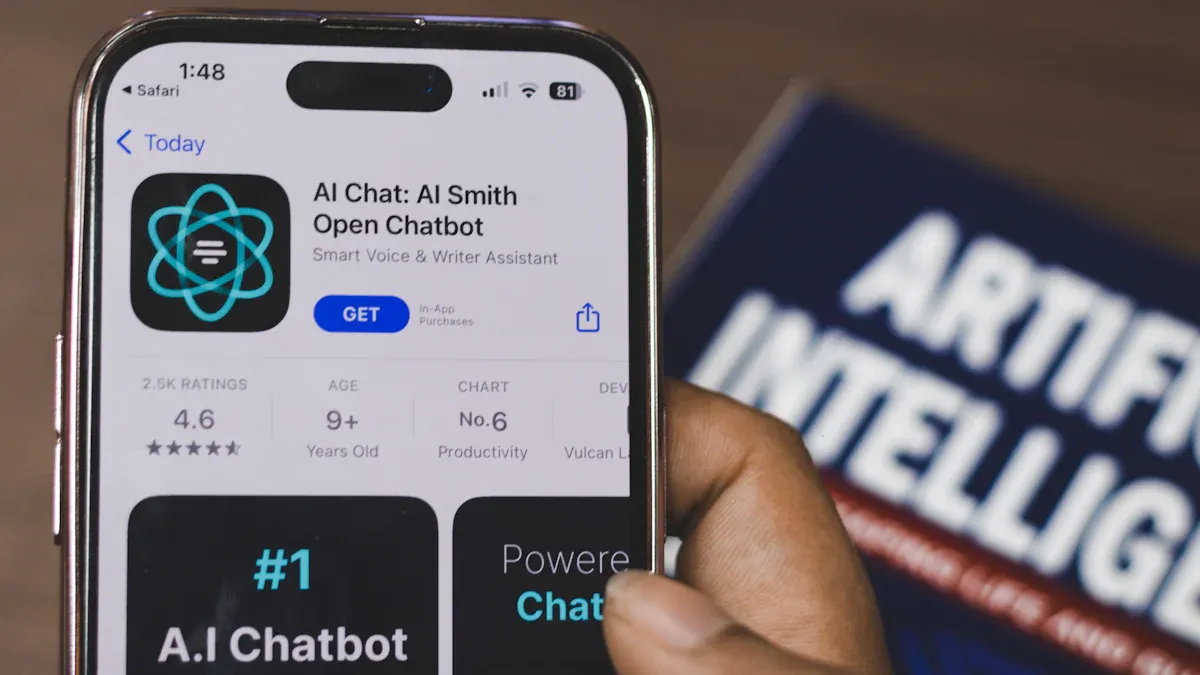
Everyday users want chatbots that offer reliable answers, smooth conversation, and help with daily tasks. The best ai chatbots stand out by providing fast responses, high accuracy, and a friendly conversational experience. Below is a table comparing the performance and strengths of several leading ai chatbots for daily use:
|
AI Chatbot |
Key Strengths & Performance Metrics |
Best Use Case / Notes |
|---|---|---|
|
ChatGPT |
Fast, accurate, versatile; 180M+ monthly users; high satisfaction |
General knowledge, creative tasks, education |
|
Gemini |
Advanced reasoning, long-context, multimodal; top scores in logic and math |
Research, business intelligence, creative collaboration |
|
Claude |
Detailed, nuanced summaries; excels at complex information synthesis |
Document summarization, in-depth research, content creation |
ChatGPT
ChatGPT remains one of the top picks for general use. Its user base grew from 100 million to 180 million monthly active users in 2023. People use ChatGPT for a wide range of tasks, including education, creative writing, and technical help. The chatbot delivers fast response times and high accuracy, making it a favorite for those who value efficiency. ChatGPT Plus costs $20 per month and offers priority access, faster replies, and the latest models. Many users report high satisfaction with its performance and engagement. ChatGPT works well for students, professionals, and anyone needing quick, reliable answers. Some users note that responses can be brief or less detailed, but the overall conversational experience remains strong.
Gemini
Gemini ranks among the best ai chatbots for advanced reasoning and multimodal tasks. It scores high in logic, math, and long-context understanding. Gemini 2.5 Pro leads in benchmarks for math and reasoning, while its Flash variant offers fast replies with solid performance. Users appreciate Gemini’s ability to handle complex research, business analysis, and creative projects. However, its performance can vary, especially in specialized fields like medicine. Some users find Gemini less reliable for real-time or location-specific queries. The platform excels in business intelligence and education, making it a strong choice for users who need deep, context-aware answers.
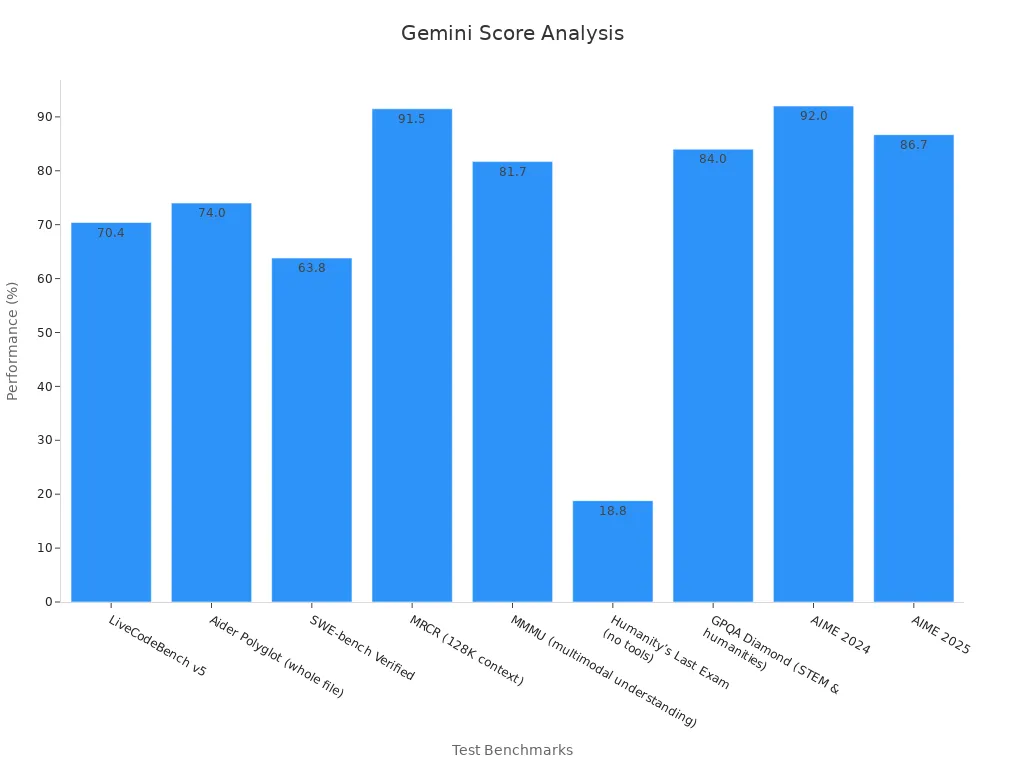
Claude
Claude stands out for its ability to synthesize complex information into detailed, cohesive summaries. It performs best when users need in-depth research, document summarization, or content creation. Claude Pro costs $20 per month, which many users find justified due to its advanced synthesis features. In real-world tests, Claude often produces more comprehensive and nuanced responses than other chatbots. Some users mention that Claude can be verbose, which may not suit those who prefer concise answers. For users who value depth and detail, Claude offers the best performance among leading ai chatbots.
Role-Specific AI Chatbots
Business & Productivity
Businesses rely on chatbots to improve productivity and streamline daily operations. Many companies use a custom ai chatbot to automate repetitive tasks, manage schedules, and handle customer queries. These chatbots often integrate with business tools like calendars, email, and CRM systems. They help teams save time and reduce errors.
A custom ai chatbot for business can route emails, summarize meetings, and provide instant answers to common questions. This automation leads to faster response times and higher customer satisfaction. Companies report that high-precision chatbots classify and route customer emails with 95% accuracy. This boosts first contact resolution rates and improves customer satisfaction scores.
Companies that use chatbots for business automation see measurable gains in productivity. For example, AI-generated meeting summaries save employees up to 30 minutes per meeting. Adoption rates of AI assistants reach as high as 98% among advisors, showing strong integration into workflows.
|
Metric Name |
الوصف |
Business/Productivity Impact |
|---|---|---|
|
Agent Experience Score |
Measures signals like agent abandonment, wait time, handle time, and sentiment in conversations |
Improves agent productivity and experience |
|
Positive Feedback Rate |
Ratio of positive feedback to total feedback |
Indicates user satisfaction and chatbot effectiveness |
|
NLU Rate |
Rate at which chatbot correctly matches user intent with confidence |
Higher rates improve response accuracy and reduce escalations |
|
Handle Time |
Average time to resolve queries |
Shorter handle times demonstrate operational efficiency |
|
Customer Satisfaction Score (CSAT) |
Direct user feedback on chatbot interactions |
Higher CSAT scores correlate with improved customer satisfaction and business outcomes |
Chatbots in business settings also reduce bounce rates and increase retention. They help companies track conversion rates and measure the impact of automation on revenue growth. These features make a custom ai chatbot essential for modern business productivity.
Coding & Development
Developers use chatbots to write code, fix bugs, and automate testing. Coding assistants like GitHub Copilot, Kodezi, and open-source tools such as Yi-Coder help programmers complete tasks faster. These chatbots offer intelligent code completion, automated code generation, and advanced refactoring.
A custom ai chatbot for coding reduces repetitive work and lowers error rates. Developers spend about 22% of their time on repetitive tasks, but AI tools help cut this time. Studies show a 25% increase in developer productivity when using AI-powered coding assistants. Companies like Anduril report faster code delivery and cost savings after adopting these tools.
-
AI chatbots for coding help identify bugs before they cause problems.
-
They automate code reviews and suggest improvements.
-
Pair programming with AI increases efficiency and code quality.
The best for coding chatbots act as multipliers for developer skills. They do not replace human developers but make them more effective. These features support both individual programmers and large development teams.
Research & Data
Researchers and data analysts use chatbots to gather information, analyze data, and generate reports. Role-specific ai chatbots in research settings provide quick access to large datasets and summarize complex findings. They help users synthesize information from multiple sources.
Systematic reviews and meta-analyses show that chatbots enhance learning achievement and knowledge retention. They offer immediate assistance and personalized learning, which improves educational experiences. In healthcare, hybrid chatbots improve patient outcomes and increase user satisfaction. For example, studies report a moderate to large positive effect on health behavior changes and higher user satisfaction with hybrid models.
A custom ai chatbot for research can:
-
Extract key insights from scientific papers.
-
Generate data visualizations.
-
Automate literature reviews.
These features make chatbots valuable tools for students, scientists, and professionals who need accurate and timely information. They also support learning by providing instant feedback and guidance.
Creativity & Content
Creative professionals use chatbots to brainstorm ideas, draft content, and manage social media. AI-powered chatbots like Sudowrite and Buffer help writers, marketers, and designers streamline their workflows. These chatbots assist with content production, SEO optimization, and interactive content creation.
A comprehensive review of academic papers highlights the importance of well-designed chatbots in co-creative workflows. The FAICO framework shows that effective communication between humans and AI improves user satisfaction and creativity. Thousands of users report enhanced brand engagement and increased conversions after adopting chatbots for content creation.
A field evaluation with design students found that generative AI chatbots improved creativity, conceptual clarity, and visual outputs. The system provided valuable insights and inspiration, helping users make better design decisions.
-
Chatbots help users brainstorm and refine ideas.
-
They automate editing and content scheduling.
-
These features boost creativity and workflow efficiency.
Creative teams benefit from automation and instant feedback, making chatbots essential for modern content creation.
Many users find that a custom ai chatbot for creative work not only saves time but also inspires new ideas. This makes chatbots a key part of the creative process.
Chatbots for Customer Service
Chatbots have changed how companies deliver customer service. They answer questions quickly and work all day, every day. Many people now expect instant responses when they reach out for help. Studies show that 69% of customers prefer chatbots for quick queries, while most still want a human for complex or sensitive issues. This has led to a hybrid approach, where chatbots handle routine tasks and humans step in for more difficult problems.
Fin
Fin stands out as a chatbot designed for customer service. It focuses on giving accurate responses and knows when to ask for help from a human. Fin tracks how often it solves a problem without needing a person. It also measures how long conversations last and how many times users return for help. Fin checks if it stays on topic and uses the right tools to answer questions. After each chat, Fin asks users for feedback to improve future responses. It also knows its limits and will direct users to real-time sources if needed. This careful approach helps Fin build trust and keep users satisfied.
-
Fin checks if it answers questions correctly.
-
It predicts when a human should help.
-
It keeps conversations clear and on track.
-
Fin uses feedback to improve its responses.
ChatGPT
ChatGPT also plays a big role in customer service. It gives fast, clear responses to many types of questions. ChatGPT can handle several conversations at once, which helps companies serve more people. It works well for common questions and can give detailed answers when needed. Some users find that ChatGPT sometimes gives short responses, but it usually keeps the conversation moving. ChatGPT can also connect with other tools to make the experience smoother for both users and agents.
Copilot
Copilot offers strong integration with business systems. It connects easily with other platforms, making it simple for companies to add Copilot to their workflow. Reviews show that Copilot rates higher than many competitors for both support and integration. It gives consistent responses and helps agents by providing quick information. Copilot also supports building custom flows, which lets companies tailor responses to their needs. This flexibility makes Copilot a popular choice for customer service teams.
|
Metric |
Fin |
ChatGPT |
Copilot |
|---|---|---|---|
|
Response Speed |
Fast |
Fast |
Fast |
|
Integration |
High |
Medium |
Very High |
|
Feedback Collection |
Detailed |
Basic |
Advanced |
|
Human Handoff |
Smart |
Manual |
Smart |
|
Customization |
High |
Medium |
Very High |
Chatbots provide instant responses, work 24/7, and help companies save money. They also collect data to improve future responses. For the best results, many companies use chatbots for routine questions and humans for complex issues.
Voice and Mobile AI Chatbots
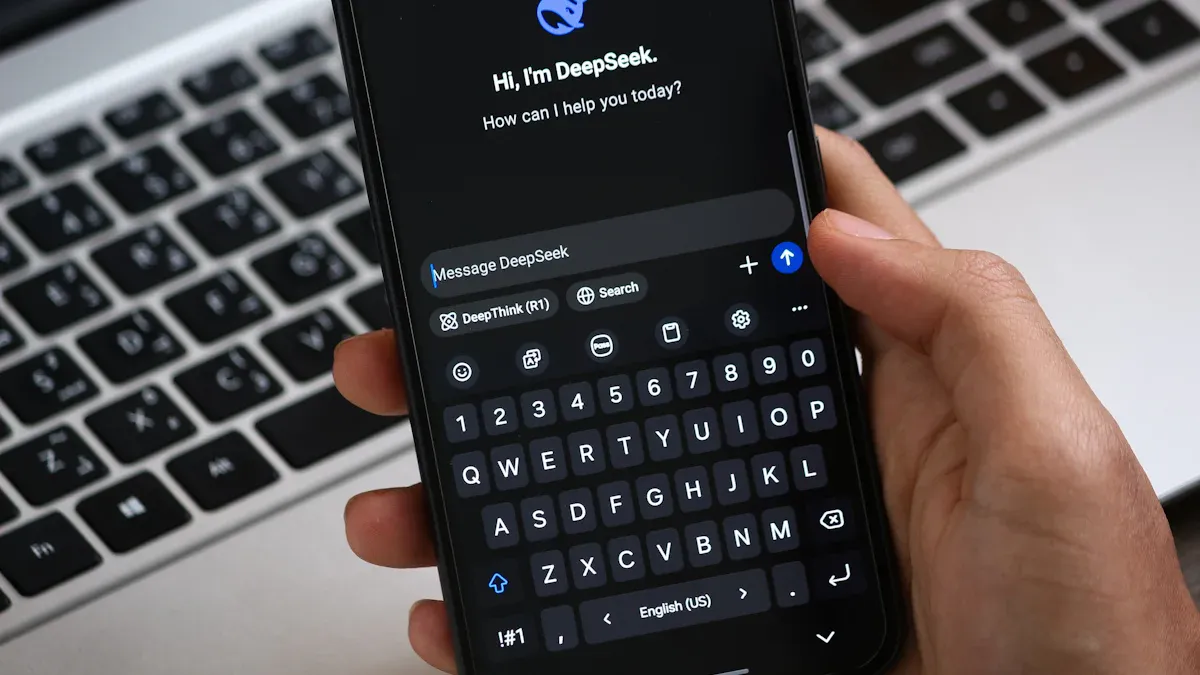
Voice Chat Features
Voice chat features have become a major part of modern AI chatbots. Over 8 billion AI-powered voice assistants are now active worldwide. About 60% of smartphone users rely on voice assistants for daily tasks. These tools use advanced speech recognition and natural language processing. They can understand emotional cues and respond in a human-like way. Companies see a 40% reduction in customer wait times after adding AI voice agents. Sales increase by 67% when businesses use voice-based chatbots. Many decision-makers now experiment with generative AI, including voice chatbots.
-
Voice chatbots provide 24/7 service and fast response times.
-
They collect real-time data from every interaction.
-
Companies use this data to improve customer service and spot trends.
AI voice chatbots help customers solve problems quickly. They also make services more accessible for people who prefer speaking over typing.
iOS & Platform Support
AI chatbots now support many platforms, including iOS, Android, and web browsers. The ChatGPT app on iOS offers a sleek design and smooth navigation. Users report high satisfaction with its reliability and easy interface. Other iOS chatbots, such as Genie AI and Nova AI Assistant, provide personalized recommendations and voice search. These apps sync across devices and protect user privacy.
User engagement remains high, with strong retention rates and daily active users. Community support and regular updates keep the experience stable. Many platforms, like Salesforce and Help Scout, offer multi-channel support and AI-powered features. Ratings from users show that these platforms work well across different environments. Companies can choose the best chatbot for their needs, knowing that strong platform support ensures a smooth interaction for everyone.
AI Chatbots Pricing Guide
Free vs Paid Options
Many users start with free AI chatbots to test features and see if the tool fits their needs. Free plans often limit the number of queries or restrict access to advanced features. For example, camelAI allows 10 AI queries per week on its free plan, while paid plans start at about $25 per month and offer unlimited use. Chat2DB provides a free, open-source solution for tech-savvy users who want privacy and community support. Microsoft Power BI offers a free desktop version with basic Q&A, but sharing and cloud features require a Pro plan at $10 per user each month.
|
Tool |
Pricing Model |
Free Tier Features & Limits |
Paid Tier Advantages |
Target Users |
|---|---|---|---|---|
|
camelAI |
Free & Paid |
10 queries/week, limited data sources |
Unlimited queries, dashboards, collaboration |
Individuals, small teams |
|
Chat2DB |
Free (Open-source) |
Full features, local privacy |
N/A |
Tech-savvy, DIY users |
|
Microsoft Power BI |
Free & Paid |
Basic Q&A, visualization |
Collaboration, cloud integration |
Analysts, organizations |
|
Tableau |
Paid only |
N/A |
Advanced analytics, visualization |
Data-driven companies |
|
Zoho Analytics |
Free & Paid |
2 users, limited data |
Full BI suite, AI assistant |
Small to mid-size businesses |
Free AI chatbots work well for personal tasks and basic productivity. Paid options unlock more integrations, advanced analytics, and better collaboration. Businesses often choose paid plans for the best value and long-term efficiency.
Pricing Comparison
AI chatbot pricing varies by features, scale, and support. Basic plans cost less and suit simple needs. Professional and enterprise plans offer more value for larger teams and advanced use cases.
|
Pricing Tier |
الوصف |
Examples & Models |
|---|---|---|
|
Basic |
Simple use, limited features |
|
|
Professional |
Advanced AI, multi-channel support |
ManyChat Pro: $15/month; Intercom Essential: $29/month/seat |
|
Enterprise |
Large-scale, custom integrations, support |
Chatbot.com Business: $424/month; Dialogflow CX: usage-based |
-
Fixed pricing gives a set fee for a number of users or requests.
-
Usage-based pricing charges per conversation or text request.
-
Extra costs may include analytics, multi-language support, or custom integrations.
A real-world case shows a retailer spending $500 per month on a paid chatbot and saving $72,000 a year in customer service costs. This high return on investment proves that paid chatbots can deliver strong value. Free chatbots help users get started, but paid plans often provide the best value for growing businesses.
Tip: Users looking for the best free ai chatbot should compare limits and upgrade paths. Paid plans usually offer more value as needs grow.
Quick Comparison Table
Features Table
AI chatbots show different strengths in accuracy, consistency, and user engagement. The table below compares leading chatbots using key performance metrics. These metrics include accuracy on multiple-choice questions, short and long answers, and consistency across trials. User metrics such as satisfaction and retention rate also help measure chatbot effectiveness.
|
AI Chatbot |
Accuracy (MCQ) |
Short Answer Score |
Essay Answer Score |
Consistency |
User Satisfaction |
Retention Rate |
|---|---|---|---|---|---|---|
|
GPT-4 |
Highest |
Highest |
Highest |
High |
4.8/5 |
90% |
|
GPT-3.5 |
High |
High |
High |
Moderate |
4.5/5 |
85% |
|
Gemini |
Moderate |
Moderate |
Moderate |
Moderate |
4.3/5 |
80% |
|
Claude |
Moderate |
Moderate |
Moderate |
Moderate |
4.4/5 |
82% |
|
Llama 2 |
Lowest |
Lowest |
Lowest |
Low |
4.0/5 |
75% |
Note: Scores reflect averages from multiple studies and user reviews. Consistency measures how often the chatbot gives the same answer to the same question.
Pricing Table
Pricing for AI chatbots depends on complexity, technology, and usage. The table below summarizes common pricing models and cost ranges. Companies often choose between rule-based and AI-powered chatbots based on their needs and budget.
|
Chatbot Type |
Cost Range (USD) |
Cost per Interaction |
Example Use Case |
|---|---|---|---|
|
Rule-Based |
$50,000 – $100,000 |
$0.50 – $0.70 |
Simple FAQ, order tracking |
|
AI-Powered |
$100,000 – $200,000 |
$0.50 – $0.70 |
Customer support, analytics |
|
Subscription |
$10 – $30 per user/month |
N/A |
Small business, education |
|
Enterprise Plans |
$400+ per month |
N/A |
Large-scale operations |
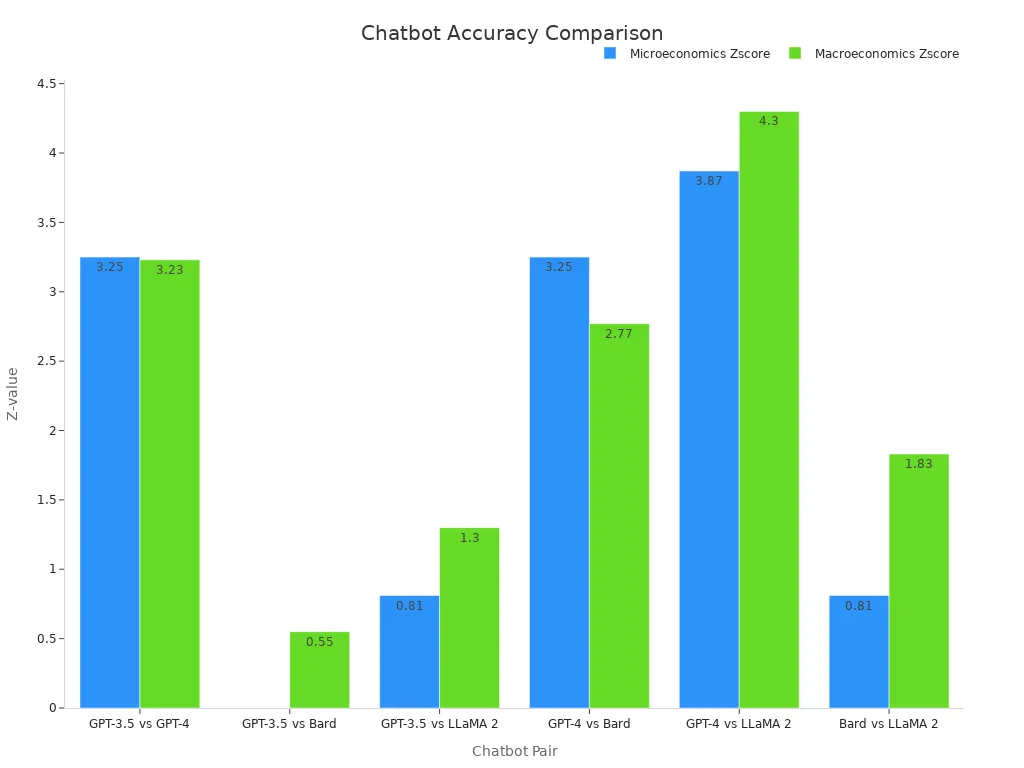
Companies save up to $80 billion by using chatbots for customer service. Automation helps agents focus on complex issues and improves organizational performance.
Best-Fit Scenarios
Selecting the right chatbot depends on the scenario and required features. The table below lists best-fit conditions for each major chatbot, including use case, performance indicators, and special considerations.
|
Chatbot |
Best-Fit Scenario |
Key Performance Indicators |
Special Considerations |
|---|---|---|---|
|
GPT-4 |
Research, education, business |
High accuracy, consistency, user satisfaction |
Superior for complex queries |
|
Gemini |
Creative tasks, collaboration |
Moderate accuracy, retention rate |
Good for brainstorming and teamwork |
|
Claude |
Summarization, content creation |
Moderate accuracy, essay score |
Excels at detailed summaries |
|
Llama 2 |
Basic Q&A, simple automation |
Low accuracy, user engagement |
Best for cost-sensitive projects |
|
Fin |
Customer service, support |
Self-service rate, escalation rate |
Strong at human handoff and feedback |
Healthcare chatbots need extra safety, privacy, and bias checks. Testing should include response time, answer accuracy, and multi-platform compatibility.
Selecting the right chatbot depends on matching features to specific needs. Users should review their main goals, such as business automation, coding, research, creativity, or customer service. Each top option excels in different areas. For example, some chatbots help with scheduling or device management, while others improve hiring or cost control. Readers should test several platforms, compare integration and pricing, and choose the one that fits their needs best. User context and preferences shape which chatbot works most effectively.
التعليمات
What is the difference between AI-powered and rule-based chatbots?
AI-powered chatbots use machine learning to understand and respond to questions. Rule-based chatbots follow set rules and scripts. AI chatbots handle complex tasks. Rule-based chatbots work best for simple, repetitive jobs.
Can AI chatbots replace human customer service agents?
AI chatbots answer many routine questions quickly. They help reduce wait times. For complex or sensitive issues, human agents still provide better support. Many companies use both for the best results.
Are AI chatbots safe to use with personal information?
Most leading AI chatbots use strong security measures. They protect user data with encryption and privacy controls. Users should check each chatbot’s privacy policy before sharing sensitive information.
How do I choose the right AI chatbot for my needs?
Users should list their main goals. They can compare features, pricing, and platform support. Testing a few chatbots helps find the best fit. Reading reviews and checking integration options also helps.

